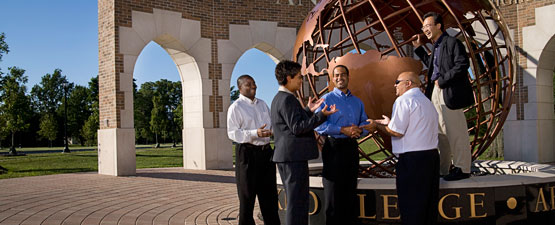Professional Dissertations DMin
Date of Award
1981
Document Type
Project Report
Degree Name
Doctor of Ministry
College
Seventh-day Adventist Theological Seminary
Program
Doctor of Ministry DMin
First Advisor
James David Chase
Second Advisor
Arnold A. Kurtz
Third Advisor
Theodore J. Chamberlain
Abstract
Problem
Although the General Conference Communication Department has a plan of action outlined for local conference communication directors, a clearly stated rationale for this department as to its place in the evangelistic strategem of the church has yet to be developed. The purpose of this study, therefore, was to provide the laity, church pastors, local conference communication directors, and conference presidents with a better understanding of the place for and duties of a trained conference communication director in an evangelistic context.
Method
Interviews with several professionals in communication, a study of the General Conference role description for conference communication directors, and a pre-questionnaire sent to fifty denominational workers in the United States gave the researcher the data needed for his design of the three surveys used in this study. These surveys or questionnaires--previously sent to thirty Andrews University faculty members for their advice and counsel--were sent to all conference presidents, all conference communication directors, and a random sampling of 354 pastors in the United States. The information received from these respondents, coupled with the researcher's own studies into theological and communication source materials and his contact with PR professionals, served as the information base for this study.
Results
The results of the project were as follows:
1. The respondents generally are concerned about the communication director having sufficient "time" for his work, due to his responsibilities for other departments in addition to his own.
2. Communication directors and presidents see conference communication directors as being engaged in up to 33 percent more activities in one month than that perceived by pastors. These findings seem to indicate that pastors generally receive less assistance from their communication directors than the communication directors themselves and conference presidents seem to think they receive.
3. The majority of the respondents consider the work of the communication director as "indirect evangelism in terms of image-building" (76.08 percent) rather than "seed-sowing evangelism" (46.33 percent). Thus most of the respondents appear to view the work of the communication director as more of a framework for or reinforcement to evangelism than a part of the evangelistic process itself.
4. Indications from the survey are that approximately 80 percent of all of the respondents had their training in theology or religion. Apparently due to this factor, all three groups see the need for communication directors to gain additional training in communication. This is especially emphasized by the communication directors themselves who give a higher response than either pastors or conference presidents in fifteen out of the nineteen categories noted in the survey concerning the professional or specialized training needed by communication directors.
5. The survey also indicates that a majority of the respondents see the communication department as being "approximately equal in importance to other conference departments" (40.65 percent) with a number from each group saying that it "could be" the "most important" department if it were perceived as such and were organized accordingly. However, these views are counterbalanced to some extent by those from all three groups who considered the department either "optional" (6.90 percent) or "less important" (14.64 percent) than other departments of the conference.
6. Even though a majority of the pastors say they are "well-acquainted" (63.66 percent) with the communication director, indications from the survey as a whole show that in many of the conferences, regardless of this acquaintance, relatively little assistance in communications is given to the pastors.
7. Results from the survey also indicate that a high percentage of the activities conference communication directors are involved in during a typical three-month period are office oriented rather than people oriented. These activities include writing (73.47 percent), photo coverage of church-related events (65.31 percent), preparation of resource and promotional materials (26.53 percent), and editing (14.29 percent).
Conclusion
The results of the study clearly indicate that local conference presidents, pastors, and communication directors themselves are relatively uncertain about the role and evangelistic value of the communication director in the local conference. This uncertainty appears to emerge from two primary causes: 0) the lack of time available to communication directors to do their work adequately, since most oversee one to three other departments as well, and (2) the lack of previous training for their position which in some respects tends to hinder their perceived and actual effectiveness in certain areas in which they otherwise would be considered experts (such as teaching pastors how to write for the news media or how to design radio or television spots). The researcher concludes that in order for local conference communication directors to serve their conferences with efficiency and effectiveness, they should be previously well-trained and, when called to this office, free from the administrative responsibilities involved in overseeing additional departments.
Subject Area
Communication--Religious aspects--Christianity; Seventh-day Adventists--Public relations
Recommended Citation
Meyers, Daryl Louis, "A Description and Analysis of The Role of The Local Seventh-day Adventist Conference Communication Director in The United States" (1981). Professional Dissertations DMin. 464.
https://dx.doi.org/10.32597/dmin/464/
https://digitalcommons.andrews.edu/dmin/464
Creative Commons License

This work is licensed under a Creative Commons Attribution-No Derivative Works 4.0 International License.
DOI
https://dx.doi.org/10.32597/dmin/464/
Files over 3MB may be slow to open. For best results, right-click and select "save as..."



